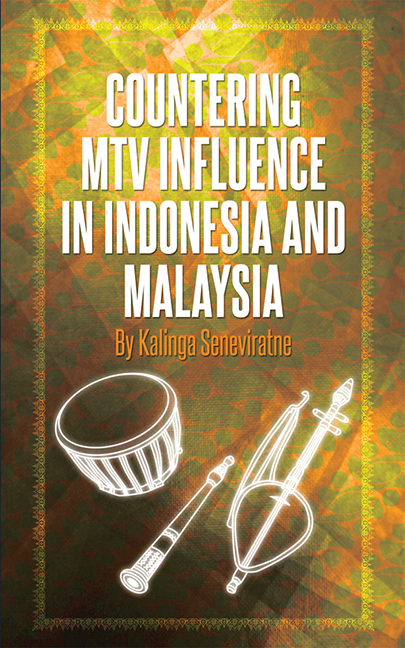Book contents
- Frontmatter
- Contents
- Preface
- 1 Introduction
- 2 Malay Cultural Landscape and Identity: Malaysia and Indonesia
- 3 Music, Islam, and Modern Cultural Identities
- 4 Pop Music, Cultural Imperialism, and Localization
- 5 Case Studies
- 6 Countering Cultural Imperialism: Theoretical Analysis
- References
- Index
- About the Author
5 - Case Studies
Published online by Cambridge University Press: 21 October 2015
- Frontmatter
- Contents
- Preface
- 1 Introduction
- 2 Malay Cultural Landscape and Identity: Malaysia and Indonesia
- 3 Music, Islam, and Modern Cultural Identities
- 4 Pop Music, Cultural Imperialism, and Localization
- 5 Case Studies
- 6 Countering Cultural Imperialism: Theoretical Analysis
- References
- Index
- About the Author
Summary
The discussion of the results of the three case studies in this chapter is designed to provide further insights into the issues discussed in the previous two chapters. These case studies include interviews with high profile artistes and their managers, composers and art critics, and scholars, information that will support the premise that MTV's influence has not necessarily been a cultural imperialistic intrusion into the popular musical cultures of Indonesian and Malaysian youth. At the same time I will propose that MTV has provided an impetus for cultural creativity. Local groups have incorporated some ideas or formats emanating from MTV into the packaging of their own music in an attempt to ensure that it will sound “hip and cool” to the ears of youth audiences.
Inul Daratista: Pornography or Contemporary Pop Dangdut?
The onomatopoeic name is most likely derived from the sound of [the] Indian tabla and other instruments going “dang, dang, dut dut, dang dut, dang dut”. But unlike its simple name, the music has taken a relatively complex evolutionary journey. [While] the bongo drums, flute and tambourine driving the beat may [have been] … drawn from the Indian subcontinent and other places, including Portugal, Spain and the Middle East,… it is now distinctly Indonesian. Throughout history local artistes concocted their fusions and cross-overs to make what we know now as dangdut or Malay rhythm. (Jakarta Post, 4 May 2003)
To be honest, before the arrival of Inul-mania, I ignored dangdut music. Even when Inul first showed up on television rocking the country with her “drilling” gyrations, I couldn't care less. Not until a colleague at work whispered to me: “Watch her hips! They'll blow you away!” Well, I have to admit that her dance amazed me, but I've seen a lot of this kind of stuff on MTV. (Faye Belnis, Jakarta Post, 4 May 2003)
Inul uses eroticism and sensuality instead of dangdut music. It's “haram” music. It is haram because it is erotic and sensual. That popularity is negative popularity. Inul is popular here but the context is negative. Dangdut dancing has aesthetics, style, not eroticism. (Rhoma Irama, personal interview, July 2004)
- Type
- Chapter
- Information
- Countering MTV Influence in Indonesia and Malaysia , pp. 190 - 226Publisher: ISEAS–Yusof Ishak InstitutePrint publication year: 2012

